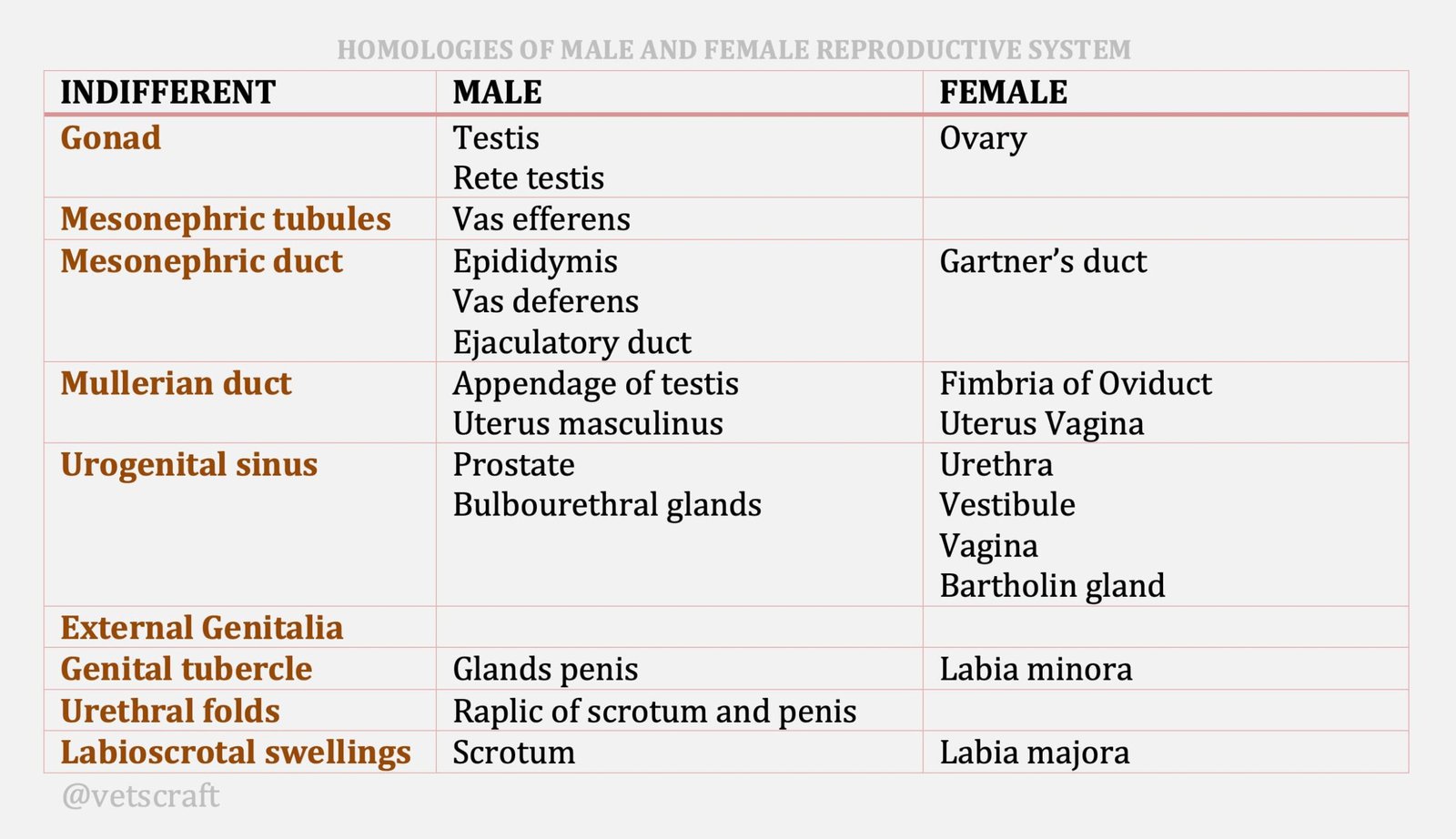TABLE OF CONTENTS
Anestrus in Cows
Anestrus in cows either because she has not come into estrus (non-cycling) or because oestrus was not detected (cycling).
Anestrus in cows is:
- Characterized by a failure of estrus
- Principal symptom of many conditions
- Most common cause of infertility

Anestrus in animals can be classified in two categories:
- Class I (False Anestrus) (with functional CL)
- Class II (True Anestrus) (with no functional CL)
False Anestrus
Anestrus due to pregnancy
During pregnancy due to presence of the CL in the ovary animal does not come to heat or oestrus.
Anestrus due to Persistent CL
Associated with uterine pathological condition like:
- Pyometra
- Mummified fetus
- Fetal maceration
- Mucometra
- Hydrometra
- Absence of endometrial glands / lack of caruncles
- In cows with uterus unicornis, CL develops on ovary corresponding to the missing horn results in long period of anestrum
- Persistent CL do not occur in normal non pregnant uterus
Associated with CL of Pregnancy
- That terminated early and not recognized.
- Not actually a true retained CL but a CL of pregnancy that terminated at early.
- Animal comes to estrum spontaneously after embryo or fetus is expelled or reabsorbed.
- Commonly observed in Trichomoniasis, Vibriosis, Rough manipulation of the uterus and defective sperm or ova.
Persistent CL does not occur in the presence of a normal non-pregnant uterus. many veterinarians tend to wrongly call a cyclic CL as persistent CL.
Subestrus, Weak or Silent Estrus and Unobserved Estrus
- The cow has normal cyclic activity, but is not observed in estrus due to weak or absent oestrous behavior or insufficient observation.
- Most common especially in buffalo cows.
- Common during post partum period.
- Rectal examination would reveal the condition.
Causes
- Physiological basis is not known-may be due to a lack of estrogen and a potentiating action of progesterone.
- Advanced age.
- Arthritis.
- Poor nutrition.
- Seasonal stress.
- Suckling.
Unobserved Estrum
- Managerial deficiencies.
- Short period of estrus.
Diagnosis
- Rectal examination reveals a mature CL in one of the ovaries and a flaccid uterus indicating diestrous condition or a tonic with regressing CL and follicle or developing CL indicating estrus, proestrus or metestrus.
- Examination of postpartum anestrous cows at 60-90 days, heifers at 18-24 months of age and buffalo heifers at 30-60 months of age is necessary.
Prognosis
- Anestrum due to persistant CL by uterine pathology- good in fetal mummification and early embryonic deaths.
- Pyometra-fair to good.
- Late fetal maeration, mucometra or congenital absence of uterine glands-poor.
Treatment
- Education of herdsman.
- Unobserved estrus-improving the managerial practice.
- Increased regular observation thrice a day of estrus.
- Adequate lighting.
- Use of teaser bulls.
- Careful frequent examination of cows, prediction and confirmation of estrus and breeding.
- Specific-Estrus synchronization by using prostaglandin or Progesterone therapy and fixed time insemination is highly effective.
- Estrogenic therapy for anestrus:
- lEstradiol valerate – 5-10 mg (regresses CL).
- Diethyl stilbesterol – 40-100 mg (2nd or 3rd injection at 48 hours interval).
- Estradiol – 3-10 mg ( 1 or 2 injections at 3 days interval).
- All the above induce luteal regression either during metestrus or diestrus or in cases of retained CL with pymetra, mummified fetus or mucometra.
True Anestrus
- Small inactive ovaries-no functional CL
- May be due to an insufficient release of gonadostropins or failure of the ovaries to respond.
Causes
- A low plane of nutrition – most common cause – lack of energy and protein, deficiency of minerals-P, Co, Fe, Cu, I and Mn and Vit. A.
- Heavy lactation – negative energy balance.
- Chronic debilitating disease like JD, TB , FMD, Actinomycosis, Lymphocytoma, internal and external parasites, arthritis etc.,
- Senility with loss of teeth and inability to masticate is a cause of weight loss, delbility and anestrus.
- Seasonal and environmental influence.
- Closely confined dark stables, lack of exercise combined with nutritive factors.
- Suckling prolaction reduces the ovarian sensitivity.
- Cystic ovary-luteal cyst characterized by anestrum.
- Miscellaneous conditions.
- Free martinism.
- Congenital bilateral hypoplasia of ovary.
- Tumors of the ovary-granulosal cell tumor.
- Chronic tumors, abscess and cyst in pituitary gland.
Diagnosis
Rectal Examination
- Small and smooth ovaries.
- Buffaloes-spindle like.
- Should be confirmed by repeated examinations at 10 days interval.
- Ultrasonography-structure of the ovary.
Treatment
Improve nutrition by:
- Extra feeding of a concentrate mixture of grains like maize, cholam, kambu etc., and atleast small amount of green fodder along with other roughages.
- Supplement minerals and vitamins.
- Specific patent preparation which contain important minerals.
- Standard mineral mixture.
- 5 gms of copper sulphate for 7 days.
- Injection of phosphorus and vitamin A.
Improve managerial practice by:
- Eradication of internal and external parasitism.
- Proper housing.
- Elimination of stressful factors.
Specific treatment of True Anestrus:
- GnRH 0.5 mg may be repeated after 10 days.
- GnRH analogue Busereline 0.02 mg.
- Removal of the cyst of the ovary by hormonal administration.
- PMSG or FSH is not advisable as they can cause superovulation.
- Short term progestogens.
- PRID or Ear implant induces heat even in anestrus animals.
- Progesterone injection followed by hCG or combination of progesterone + PMSG + estrogen.
- Clomiphene citrate 300 mg daily for 5 days drenched as suspension after drenching of CuSO4 solution.

